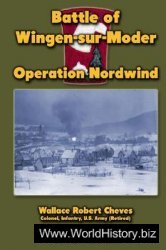The final prehistoric period is here labeled the ‘specialization and complexity’ phase. This development was extremely variable across the state, in both timing and in the degree to which it was expressed. With the notable exception of the desert regions, the spread of the acorn economy was completed during this timeframe, and most groups saw continued population increase. In all cases California’s natives continued to hone their technologies in order to increase the efficiency of resource extraction within a given territory. Among the most significant developments was the practice of actively managing resources to improve productivity. Sometimes referred to as ‘protoagriculture’, resources were manipulated by selective culling, pruning, and even watering of wild plants. One common form of resource manipulation took the form of wholesale burning of entire tracts of land, setting into motion natural forces of ‘ecological succession’ that produces a bounty of new shoots, greens, and seeds. With increased overall productivity came increased yields for storage, which fostered continued population growth. This phase also witnessed manufacture of local goods for the specific purpose of interregional exchange. As territories became more and more stringently protected, control over the distribution of prized but highly localized resources such as obsidian or salt was possible, and could be turned to local advantage as trade items. The second facet of this phase - complexity - is considerably less widespread statewide, but far more pervasive than previous generations of anthropologists have considered. In selected cases - notably in coastal areas - disparities among individuals in the distribution of surplus resources, as well as in access to monopolized goods and crafts were put to the task of creating a true society of ‘haves’ and ‘have-nots’. Using surplus to personal advantage is one road to the rise of chiefly society, a level of political complexity that is uncommon among hunter-gatherers, yet characteristic of selected regions of California.
The earliest evidence for highly complex political organization in California is found in the San Francisco Bay area, where great mounds of shell, bone, charcoal, artifacts and human remains have intrigued archaeologists since the early twentieth century. University Village near Stanford University, and the West Berkeley and Emeryville mounds on the eastern Bay shore (Figure 1), along with over 100 smaller mounds have revealed literally tons of archaeological remains. The contents of these mounds have contributed to an understanding of San Francisco Bay area material culture that is perhaps unparalleled in California. Only recently, however, have archaeologists begun to explore the sociopolitical implications of the mounds themselves.
Many archaeologists now believe that the shell mounds were not simply accumulated, but were purposefully built. One line of evidence for this notion is that the mounds are not in fact simply undifferentiated piles of debris, but instead contain intact features including residential architecture, sweathouses, and hearths. Ceremonial activities are indicated by cemetery areas, as well as purposeful caches of nonutilitarian items such as charmstones, whistles, pipes, and obsidian knives. Ritual interments of mammals, such as bears, and large birds, including condors are found, and reflect some form of ceremonialism. Finally, there are stratigraphic indications that soil was purposefully deposited as fill to expand the sizes of the mounds. The mounds thus appear to be mixtures of living and ceremonial space, not mere piles of trash but landmarks along the Bay, visible for miles around as sociopolitical landmarks.
The timeframe c. 2500-1000 BP was the Golden Age for shell mounds in the San Francisco Bay area. During this time mounds were occupied year-round, and logistically organized expeditions ranged inland for acorns and game and to the Bay waters for shellfish, fish, and sea mammals. Burial evidence suggests that violence peaked at this time, perhaps reflecting the importance of territorial claims. Elaborate grave treatment accorded a few individuals suggests dramatic status and/or wealth distinctions. Population size steadily increased along with increased political complexity, until the scale of resource acquisition that fostered the lifestyle could no longer be maintained. For instance, there is firm evidence for human over-predation on shellfish species, land mammals, and sea mammals until existing human populations were forced to disperse, leaving the mounds behind.
Many people moved inland, where foothills surrounding the Bay saw a distinct rise in regional population size. Those that remained broke into smaller groups, coming down to us as the Costanoan-Ohlone, an ethnographic group that, in the historic era, had no sociological or political analogs to the complex political systems represented by the mounds of San Francisco Bay. Although people survived, the prehistoric system evidenced by the San Francisco Bay mounds simply collapsed when high population densities could no longer be maintained.
At about the same time that the Bay area culture was undergoing population dispersal, the coast along Santa Barbara, Ventura, and northern Los Angeles Counties began to show distinctive signs of increasing political and social complexity. Over the next 700 years - until the time of European contact - the ancestors of the Chumash developed intricate social, ceremonial, economic, and political networks that are unparalleled among hunter-gatherers anywhere in the world. The ancestral Chumash shared with their Bay area counterparts an exceedingly productive natural environment, combining rich inland resources - acorns and other plant resources, plentiful game - with a bountiful littoral zone teeming with shellfish, fish, and sea mammals. Where the San Francisco Bay area saw skyrocketing population numbers lead to overpredation and resource depletion, however, the ancestral Chumash found a technological solution that opened several previously untapped (or little-used) ecological niches.
The Chumash designed and built perhaps the most sophisticated watercraft found in North America, and from these they accessed the resources not only of the open sea, but of the largely untapped Channel Islands as well. Where the San Francisco Bay area saw greatly intensified resource acquisition during the Golden Age of mounds, Chumash resource acquisition became not just more intensive, but more extensive as well.
The larger ramifications of the canoe on Chumash society can hardly be overstated. The Chumash canoe (or tomol) was made of redwood planks retrieved as driftwood, held together with sinew and dowels and caulked with tar and pitch, reaching lengths of 7m or more. Canoes were exceedingly difficult and timeconsuming to manufacture, and essentially required the full-time efforts of expert engineers and apprentice laborers. The tomol-makers developed their own hereditary guild, passing down specialized tools and painstaking techniques from one generation to the next: a social class. The extensive effort necessary to tomol manufacture required a form of patronage in order to free the specialists from daily resource collection activities, and only the wealthiest individuals could wield the surplus necessary to commission a canoe. In the end, canoe owners were rewarded with valuables obtained in exchange with the Channel Islands as well as high-prestige open-sea resources such as swordfish, tuna, and dolphin. Canoe owners thus turned wealth into prestige, and in turn into still more wealth. Where newly gotten wealth is turned to still more sponsored labor, the cycle is self-perpetuating, and an elite class is born.
At the time of European contact, Chumash society featured specialized classes of craftsmen engaged not only in manufacture of the tomol, but also in manufacture of special stone tools (microdrills), stone bowls, and a host of ‘nonutilitarian’ items. Among the latter were beads which came to serve as a standardized form of currency, an extremely rare development among hunter-gatherers. Although the archaeological record is largely silent on the subject, it is logical to assume that specialists may have dominated other facets of Chumash society, such as hunting, fishing, and perhaps canoe navigation. Not only responsible for sponsoring manufacture of specialists’ goods, tomol owners were responsible for distribution of goods across the Channel as well as up and down the coast, giving canoe owners enormous control over the growth and development of Chumash society. Eventually, the Chumash came to be organized around hereditary chiefs who held sway at the village as well as regional levels, a form of political organization that is truly anomalous among hunter-gatherers. Much of the wealth and prestige that eventually spiraled into hereditary power is probably attributable to control over the tomol.
It is fascinating but ultimately futile to speculate about the political and social developments that were truncated by the arrival of the Spanish in 1769. But in addition to the Chumash, several Native California groups were beginning to turn surplus into wealth, and wealth into power during the general time frame from AD 1000 to historic contact. These groups included the Gabrieleno, or Tong-va of the Los Angeles coast and basin, the Yokuts of the southern Central Valley and southern Sierra foothills, the Pomo of the North Coast Ranges, and the salmon-fishers of the northwestern state, including the Hupa, Yurok, and Karok. In each case, a wealthy natural environment and specialized technology, combined with a focus on resources that could be stored, promoted both population growth and inequality in the distribution of surplus.




 World History
World History

![The Battle of Britain [History of the Second World War 9]](/uploads/posts/2015-05/1432582012_1425485761_part-9.jpeg)







